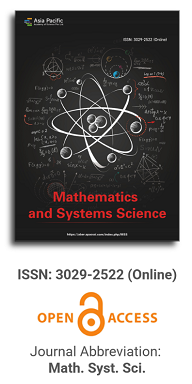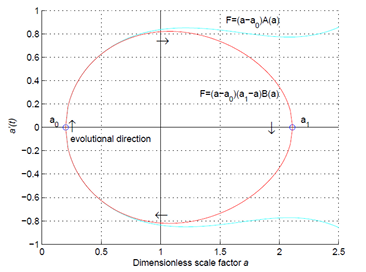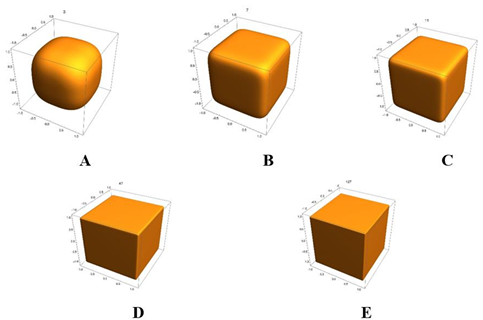
Publication Frequency
Quarterly since 2025
Journal Articles
Search
Search scope
Volume Arrangement
2023
Featured Articles

If general relativity is correct, then the origin of the universe is a simple mathematical problem. The Friedmann equation in cosmology is a well-structured ordinary differential equation, and the global properties of its solutions can be qualitatively analyzed by the phase-trajectory method. In this paper we show that the total energy density of matter in the universe is positive, and the total pressure near the Big Bang is negative. By analyzing the global properties of the solutions to the Friedmann equation according to these two conditions of state functions, we find that the Big Bang is impossible, and the space must be a closed 3-dimensional sphere, the cosmological constant is likely to be zero, and the evolution of the universe should be cyclic. The analysis and the proof are simple and straight forward, therefore these conclusions should be reliable.

Fermat’s last theorem appears not as a unique property of natural numbers but as the bottom line of extended possible issues involving larger dimensions and powers when observed from a natural vector space viewpoint. The fabric of this general Fermat’s theorem structure consists of a well-defined set of vectors associated with dimensional vector spaces and the Minkowski norms one can define there. Here, a special vector set is studied and named a Fermat surface. Besides, a connection between Fermat surfaces and hypercubes is unveiled.
Stability analysis of the SEIRS epidemic model with infectious dynamics during latent and infectious periods
Article ID: 2885
Vol 2, Issue 2, 2024
DOI: https://doi.org/10.54517/mss2885
Vol 2, Issue 2, 2024
Received: 15 August 2024; Accepted: 13 September 2024; Available online: 30 September 2024; Issue release: 15 November 2024
Download PDF
Abstract
Coronary pneumonia caused by the SARS-CoV-2 virus was one of the most significant public health threats in recent years. In this paper, we develop and investigate an SEIRS epidemic model that incorporates infectivity during both the latent and infectious stages to characterize the transmission dynamics of COVID-19. By calculating the basic reproduction number (R0) and applying monotonic dynamical system theory along with geometric methods, we validate the threshold theorem. Our analysis demonstrates that the disease-free equilibrium is globally stable when R0 < 1, while the endemic equilibrium becomes globally stable when R0 > 1.
Keywords
COVID-19; SEIRS epidemic model; Basic reproduction number; Global stability
References
- Alrashed S, Min-Allah N, Saxena A, et al. Impact of Lockdowns on the Spread of COVID-19 in Saudi Arabia. Informatics in Medicine Unlocked. 2020; 20: 100420.
- Annas S, Pratama MI, Rifandi M, et al. Stability analysis and numerical aimulation of SEIR Model for pandemic COVID-19 spread in Indonesia. Chaos, Solitons and Fractals. 2020; 139: 110072.
- Jiao J, Liu Z, Cai S. Dynamics of an SEIR model with infectivity in incubation period and homestead-isolation on the susceptible. Applied Mathematics Letters. 2020; 107: 106442.
- Kyrychko YN, Blyuss KB, Brovchenko I. Mathematical modelling of the dynamics and containment of COVID-19 in Ukraine. Sci Rep. 2020; 10: 19662.
- Zu J, Li ML, Li ZF, et al. Transmission patterns of COVID-19 in the mainland of China and the efficacy of different control strategies: A data- and model-driven study. Infect Dis Poverty. 2020; 9: 83.
- Zamir M, Shah K, Nadeem F, et al. Threshold Conditions for Global Stability of Disease Free State of COVID-19. Results in Physics. 2021; 21: 103784.
- Abdullah, Ahmad S, Owyed S, et al. Mathematical analysis of COVID-19 via new mathematical model. Chaos, Solitons Fractals, Chaos, Solitons and Fractals. 2021; 143: 110585.
- Al-arydah M. Assessing vaccine efficacy for infectious diseases with variable immunity using a mathematical model. Sci Rep. 2024; 14: 18572.
- Bouissa A, Tahiri M, Tsouli N, et al. Global dynamics of a time-fractional spatio-temporal SIR model with a generalized incidence rate. J. Appl. Math. Comput. 2023; 69: 4779–4804.
- Bouissa A and Tsouli N. Comprehensive analysis of disease dynamics using nonlinear fractional order SEIRS model with Crowley-Martin functional response and saturated treatment. International Journal of Biomathematics. 2024; 2350114.
- Liu W, Hethcote HW, Levin SA. Dynamical behavior of epidemiological models with nonlinear incidence rates. J. Math. Biol. 1987; 25: 359–380.
- Al-arydah M, Berhe H, Dib K, Madhu K. Mathematical modeling of the spread of the coronavirus under strict social restrictions. Math Meth Appl Sci. 2021; 1–11.
- Van den Driessche P and Watmough J. Reproduction numbers and sub-threshold endemic equilibria for compartmental models of disease transmission. Mathematical biosciences. 2002; 180: 29–48.
- Jiang J. On the Global Stability of Cooperative Systems. Bulletin of the London Mathematical Society. 1994; 5: 455–458.
- Thieme HR. Convergence results and a Poincar-Bendixson trichotomy for asymptotically autonomous differential equations. J. Math. Biol. 1992; 30: 755–C763.
- Cheng Y and Yang X. On the global stability of SEIRS models in epidemiology. Can. Appl. Math. Q. 2012; 20: 115–133.
- Li M, Muldowney JS. Global stability for the SEIR model in epidemiology. Math. Biosci. 1995; 125: 155–164.
- Li M, Muldowney JS. A Geometric Approach to Global-Stability Problems. SIAM J. Math. Anal. 1996; 27: 1070– 1083.
- Li M, Muldowney JS, van den Driessche P. Global stability of SEIRS models in epidemiology. Can. Appl. Math. Q. 1999; 7: 409–425.
- Lu G and Lu Z. Geometric approach to global asymptotic stability for the SEIRS models in epidemiology. Nonl. Anal. RWA. 2017; 36: 20–43.
- Li G, Jin Z. Global stability of a SEIR epidemic model with infectious force in latent, infected and immune period. Chaos, Solitons and Fractals. 2005; 25: 1177–1184.
- Li G, Wang W, Jin Z. Global stability of an SEIR epidemic model with constant immigration. Chaos, Solitons and Fractals. 2006; 30: 1012–1019.
- Li M, Graef JR, Wang L, Karsai, J. Global dynamics of a SEIR model with varying total population size. Mathematical biosciences. 1999; 160: 191–213.
- Li M, Muldowney JS. Dynamics of differential equations on invariant manifolds. J. Differential Equations. 2000; 168: 295–320.
Supporting Agencies
Copyright (c) 2024 Guichen Lu, Yifan Miao
License URL: https://creativecommons.org/licenses/by/4.0/
Editor-in-Chief

Prof. Youssri Hassan Youssri
Cairo University, Egypt
Indexing & Archiving
News & Announcements
2025-05-08
Prof. Rami Ahmad El-Nabulsi is highly deserving of a Lifetime Achievement Award
Prof. Rami Ahmad El-Nabulsi, Researcher at Czech Academy of Science, Czech Republic, received the Lifetime Achievement Award!
2025-03-01
Publication Frequency of MSS changes to be quarterly!
We are pleased to announce that, effective from 2025, the publication frequency of this journal will be adjusted to a quarterly schedule, with four issues released annually in March, June, September, and December....
2024-09-20
Highly Read Article Recommendation
Since the journal launched in 2023, we have been proud to publish a plethora of insightful findings in the realms of mathematics and systems science....
2024-07-10
Meeting our Editor-in-Chief and Associate Editor
It is with great pride that we introduce Prof. Youssri Hassan Youssri and Prof. Ali Akgül, who are the Editor-in-Chief and Associate Editor of our esteemed journal.
Member Application
Journal Center
Asia Pacific Academy of Science Pte. Ltd. (APACSCI) specializes in international journal publishing. APACSCI adopts the open access publishing model and provides an important communication bridge for academic groups whose interest fields include engineering, technology, medicine, computer, mathematics, agriculture and forestry, and environment.


.jpg)

.jpg)
